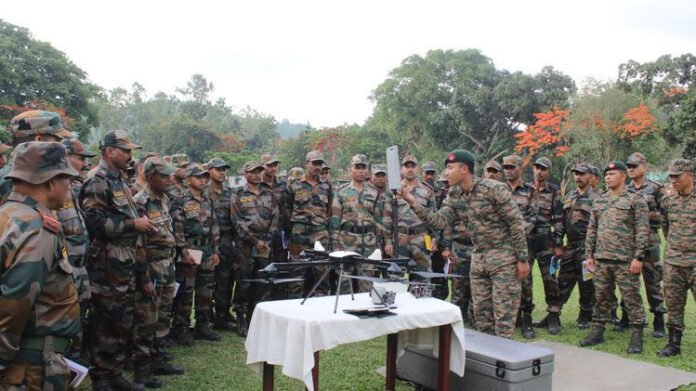
The Indian Army and the Assam Rifles conducted a joint military drill in Arunachal Pradesh. The operation, which focused on improving synergy and readiness, emphasized rapid response to security threats along the Line of Actual Control (LAC).
The Arunachal joint drill involved integrated exercises across high-altitude zones and sensitive border points. Troops from both forces participated in synchronized maneuvers that tested their interoperability, logistics coordination, and terrain adaptability.
Read More: Kamakhya Temple Somvati Amavasya Draws Thousands in Assam
Strategic Significance Along the Eastern Frontier
Arunachal Pradesh, which shares a long and disputed border with China, remains a critical area for India’s national security strategy. Recent years have seen heightened activity along the LAC, prompting Indian forces to enhance surveillance, mobility, and communication across the region.
This Arunachal joint drill served multiple strategic purposes. Firstly, it demonstrated India’s preparedness to handle any cross-border incursions. Secondly, it aimed to improve joint operational efficiency between the Army and the Assam Rifles, a paramilitary force primarily deployed in the Northeast.
“Such drills help us maintain readiness, improve teamwork, and understand each other’s operational methods,” said a senior Army officer involved in the exercise.
Key Features of the Arunachal Joint Drill
The week-long drill included mock ambushes, jungle warfare simulations, high-altitude navigation, and rapid response scenarios. Troops were trained to handle emergencies ranging from border intrusions to natural disasters.
Additionally, special emphasis was placed on intelligence sharing, drone surveillance, and secure communication protocols. Night operations were also part of the schedule, testing the soldiers’ endurance and coordination in low-visibility conditions.
According to defense officials, the drill offered both forces a chance to familiarize themselves with the region’s rugged terrain and unpredictable weather, which often pose logistical and operational challenges.
Enhancing Assam Rifles–Army Integration
Historically, the Indian Army and the Assam Rifles have worked together in the Northeast, but such joint field exercises are now more frequent due to the region’s evolving security dynamics. The Arunachal joint drill aimed to align their standard operating procedures (SOPs) and eliminate any coordination gaps.
As the Assam Rifles operates under dual control—administratively under the Ministry of Home Affairs and operationally under the Army—the joint drill helped bridge institutional processes between the two.
The field exercise also provided real-time experience for young recruits, allowing them to train alongside seasoned personnel from both forces. “This kind of field-level integration builds confidence and enhances effectiveness during live operations,” noted an officer from the Assam Rifles.
Broader Defense Readiness in the Northeast
India has invested heavily in boosting its defense infrastructure across the Northeast. Over the past few years, roads, helipads, and forward bases have been upgraded to ensure faster deployment and supply chain efficiency.
Moreover, joint drills such as this one in Arunachal are aligned with broader military strategies that prioritize jointmanship—cooperation among different branches of the armed forces. In light of increasing global tensions and regional uncertainties, India’s defense planners are focusing on readiness at every level.
The Arunachal joint drill also coincided with intelligence inputs about increased Chinese troop movement on the other side of the LAC. Although there was no immediate threat, defense sources said India remains vigilant and proactive in securing its borders.
Boost to Local Confidence and Morale
Such joint drills not only strengthen military preparedness but also reassure the local population. Residents in remote border villages often feel isolated, especially in areas where civilian infrastructure is limited.
During the drill, troops engaged with local communities, provided medical assistance, and conducted awareness drives on disaster preparedness. These outreach efforts reinforced the bond between the security forces and the people they protect.
“The presence of Army and Assam Rifles in our area makes us feel safer. They also help us during emergencies,” said Dorjee Tashi, a resident of Tawang.
The Arunachal joint drill between the Indian Army and Assam Rifles marks another step toward tighter coordination, faster mobilization, and greater defense preparedness along India’s eastern frontier. As regional dynamics continue to evolve, such exercises will remain vital in projecting strength, unity, and rapid response capability.
With terrain-specific training, technology integration, and improved troop coordination, India is clearly strengthening its defense posture in one of the most sensitive zones along the border. Through drills like this, the nation sends a clear message: it is prepared, resilient, and united in safeguarding its sovereignty.



